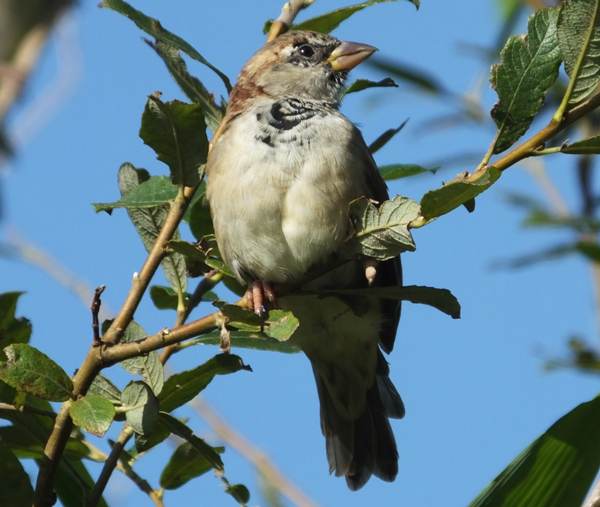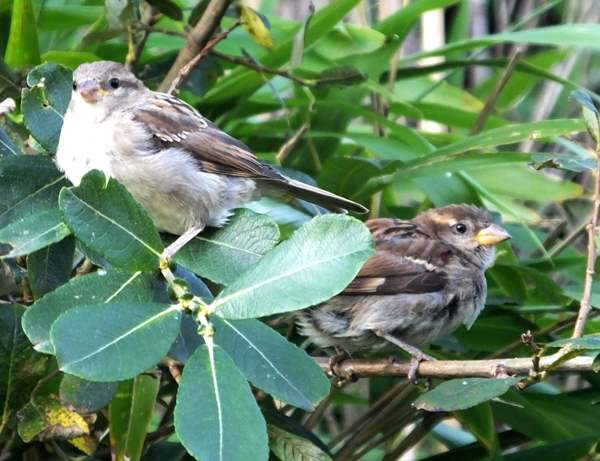Trees Birds Mammals Fish Amphibians Reptiles
Wild Algarve
Bookshop
Passer domesticus - House Sparrow
Phylum: Chordata - Class: Aves - Order: Passeriformes - Family: Passeridae
Identification - Distribution - Lifecycle - Food - Predators - Reference Sources

House Sparrow numbers in Britain and Ireland have declined in recent times, although there are now some encouraging signs of a slight recovery in Wales and Scotland.
Description
With its grey crown and greyish cheeks, and growing to typically 15cm in length, the male House Sparrow is readily distinguished from the less common and slightly smaller Tree Sparrow, which has a chestnut brown crown and white cheeks. The male House Sparrow has a black bib, variable in size; females and juveniles are less boldly marked.

Habitat
In Britain, as well as being a bird of farmland, the House Sparrow is commonly seen in town and village gardens. This gregarious resident bird often nests in holes in the eaves of old houses and outbuildings; however, you will also see these birds nesting in garden hedgerows.
Feeding
Like other sparrows the House Sparrow feeds mainly on plant seeds, but it also eats small insects, spiders and other invertebrates. If you put peanuts into your bird feeders, these greedy little sparrows will readily help themselves to a meal that you intended for woodpeckers or nuthatches; however, to attract House Sparrows to your garden bird feeders filled with seed are far more effective.
Lifespan
This little bird reaches maturity within a year and rarely lives longer than two or three years; however, exceptionally Hedge Sparrows have been know to live for more than ten years.
Breeding
The nest is an untidy straw bowl lined with fur, feathers, bits of string, plastic and other litter thrown down by untidy people. There is a clutch of typically four or five eggs per brood, and pairs, which remain together for life, can produce two or sometimes three broods per year. The eggs hatch a fortnight, and generally both adults tend the nest and feed the young until they fledge, which takes about a fortnight.
Predators
Sparrowhawks are the Hedge Sparrows main predator; however, other birds of prey such as owls are also partial to a sparrow supper.